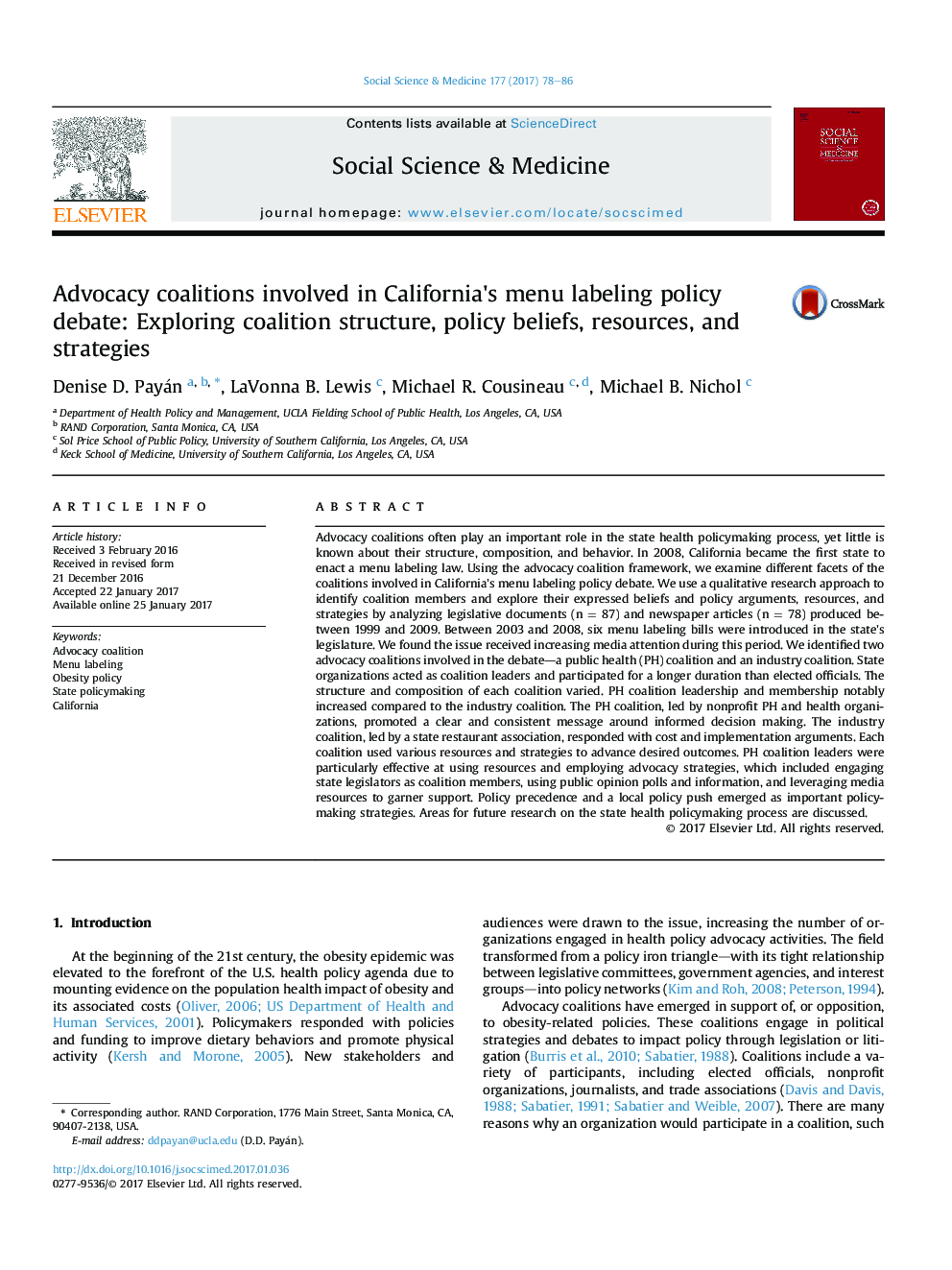| کد مقاله | کد نشریه | سال انتشار | مقاله انگلیسی | نسخه تمام متن |
|---|---|---|---|---|
| 5046714 | 1475992 | 2017 | 9 صفحه PDF | دانلود رایگان |
- Six menu labeling bills were considered in California's state legislature.
- Public health and industry coalitions, led by state organizations, were involved.
- The public health coalition was larger, more stable, and effective.
- Policy arguments focused on informed decision making and cost/implementation.
- Local policy success and precedence were important factors in state policymaking.
Advocacy coalitions often play an important role in the state health policymaking process, yet little is known about their structure, composition, and behavior. In 2008, California became the first state to enact a menu labeling law. Using the advocacy coalition framework, we examine different facets of the coalitions involved in California's menu labeling policy debate. We use a qualitative research approach to identify coalition members and explore their expressed beliefs and policy arguments, resources, and strategies by analyzing legislative documents (n = 87) and newspaper articles (n = 78) produced between 1999 and 2009. Between 2003 and 2008, six menu labeling bills were introduced in the state's legislature. We found the issue received increasing media attention during this period. We identified two advocacy coalitions involved in the debate-a public health (PH) coalition and an industry coalition. State organizations acted as coalition leaders and participated for a longer duration than elected officials. The structure and composition of each coalition varied. PH coalition leadership and membership notably increased compared to the industry coalition. The PH coalition, led by nonprofit PH and health organizations, promoted a clear and consistent message around informed decision making. The industry coalition, led by a state restaurant association, responded with cost and implementation arguments. Each coalition used various resources and strategies to advance desired outcomes. PH coalition leaders were particularly effective at using resources and employing advocacy strategies, which included engaging state legislators as coalition members, using public opinion polls and information, and leveraging media resources to garner support. Policy precedence and a local policy push emerged as important policymaking strategies. Areas for future research on the state health policymaking process are discussed.
Journal: Social Science & Medicine - Volume 177, March 2017, Pages 78-86
